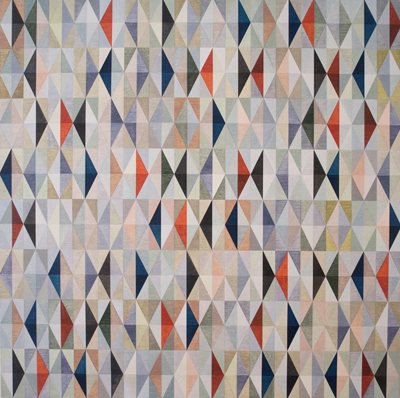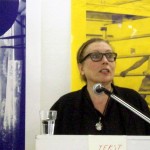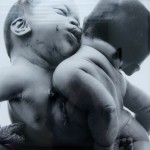I went to a book presentation at SMBA in Amsterdam two weeks ago. They did a tiny…
A system that does not produce uniformity
 Researching the tenuous link between project management and art – between rigorous systems of thought and more free-flowing ones, really – I came across the work of Briggs and Collings, and loved it. [link]
Researching the tenuous link between project management and art – between rigorous systems of thought and more free-flowing ones, really – I came across the work of Briggs and Collings, and loved it. [link]
Biggs conceives the colour, Collings applies it. Our form is a series of triangles in a grid. We use it not as an idea in itself, or as a quote from life (wallpaper or golfing sweaters, for example), but as an inert container for colour. Meaning is everywhere, it looms up in spite of ourselves, but we aim to examine what the world looks like if you remove familiar forms with their confusing narrative resonances, and substitute a neutral structure. One that supports a complex, changeable colour harmony – a landscape painting without the landscape.
Painting is in crisis – what is the point of an antiquated form in a world where representation is ubiquitous? Our answer comes from looking at its origin, both in the history of art and as the by-product of art’s original intentions: beauty. As with all our recent work, the title comes from ‘Genesis’, whose origin myths are integral to Christian, Jewish and Islamic history. (In this case, ‘Genesis 1:16’: ‘God made two great lights – the greater light to govern the day, and the lesser light to govern the night…’). These tales inform early Western depiction, which is the starting-point for our visual enquiry. [link]
Interview: In 1951 Kenneth Martin wrote: ‘The square, the circle, the triangle, etc., are primary elements in the vocabulary of form, not ends in themselves. In a rigorous form of art which uses as figures such formal elements, a complete pictorial expression can be achieved.’ Or would you say that your starting point is inspired, more directly, by existing man-made architecture or structures in nature – your observations of the real world?
MC + EB: If Kenneth Martin meant geometry is the vehicle, then we agree. For us, the grid is the thing by which we limit our visual enquiry so there’s a chance of finding something out. It’s the visually neutral basis from which we create many patterns or configurations. These are all simultaneously present in the one object. But only one is seeable at a time. We try to create multiple visual orders. The grid isn’t really anything, but bringing out multiple visual rhythms is important, and producing patterns that constantly change. Our paintings are not immutable statements. First, a pattern seems to be put together in a certain way, and then another configuration appears, then another, and so on. We don’t take on a vast field of enquiry. We don’t feel we could discover anything substantial with too broad a scope, so we’ve decided on a narrow focus. Every painting is a proposal. We ask ‘Is this true?’ ‘Does this seem accurate?’ Sometimes we discover the answer is no, but sometimes, the limitations produce something really surprising, and we think, new.
EB: Artists have put down many of their visual tools; I want our work to offer a tangible demonstration of what it might mean to have skill back. A lot of contemporary art is a like a geography lesson from a liberal-minded teacher with a bent for social studies. That’s fine, but it seems to me that de-skilling is what happens to a trade before the axe falls, because the trade has been complicit with its own demise. [link]
| « Fed and clothed | <-- previous post | next post --> | Bucket list » |
|---|







